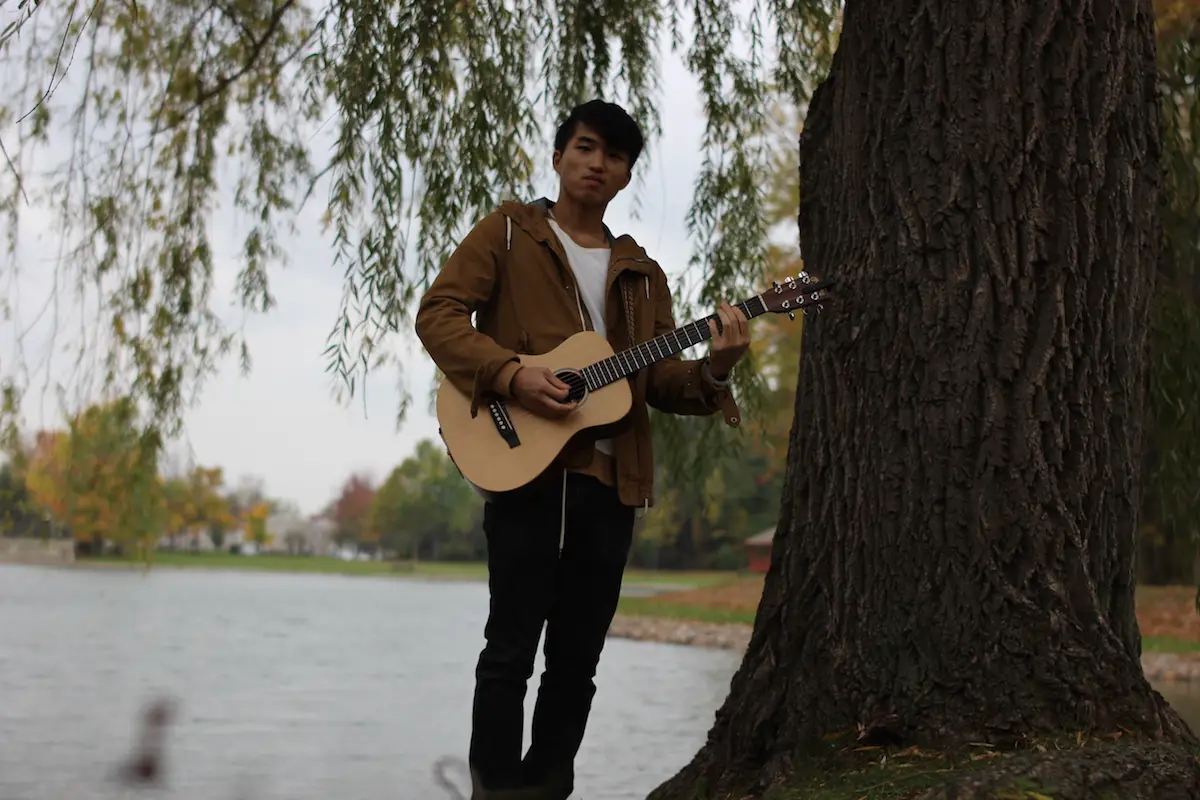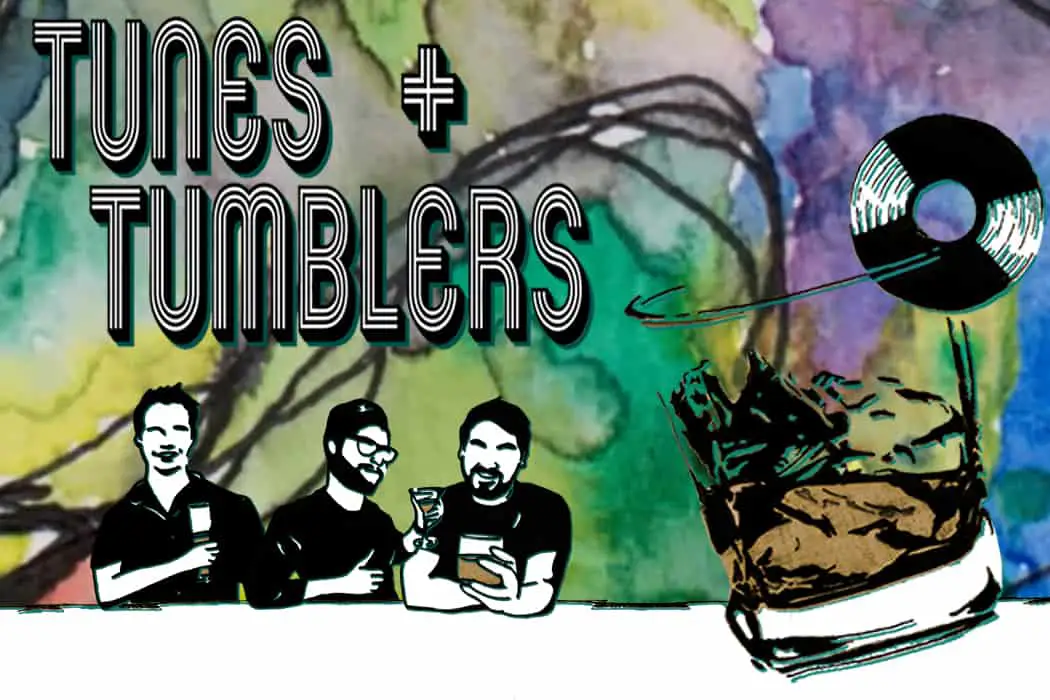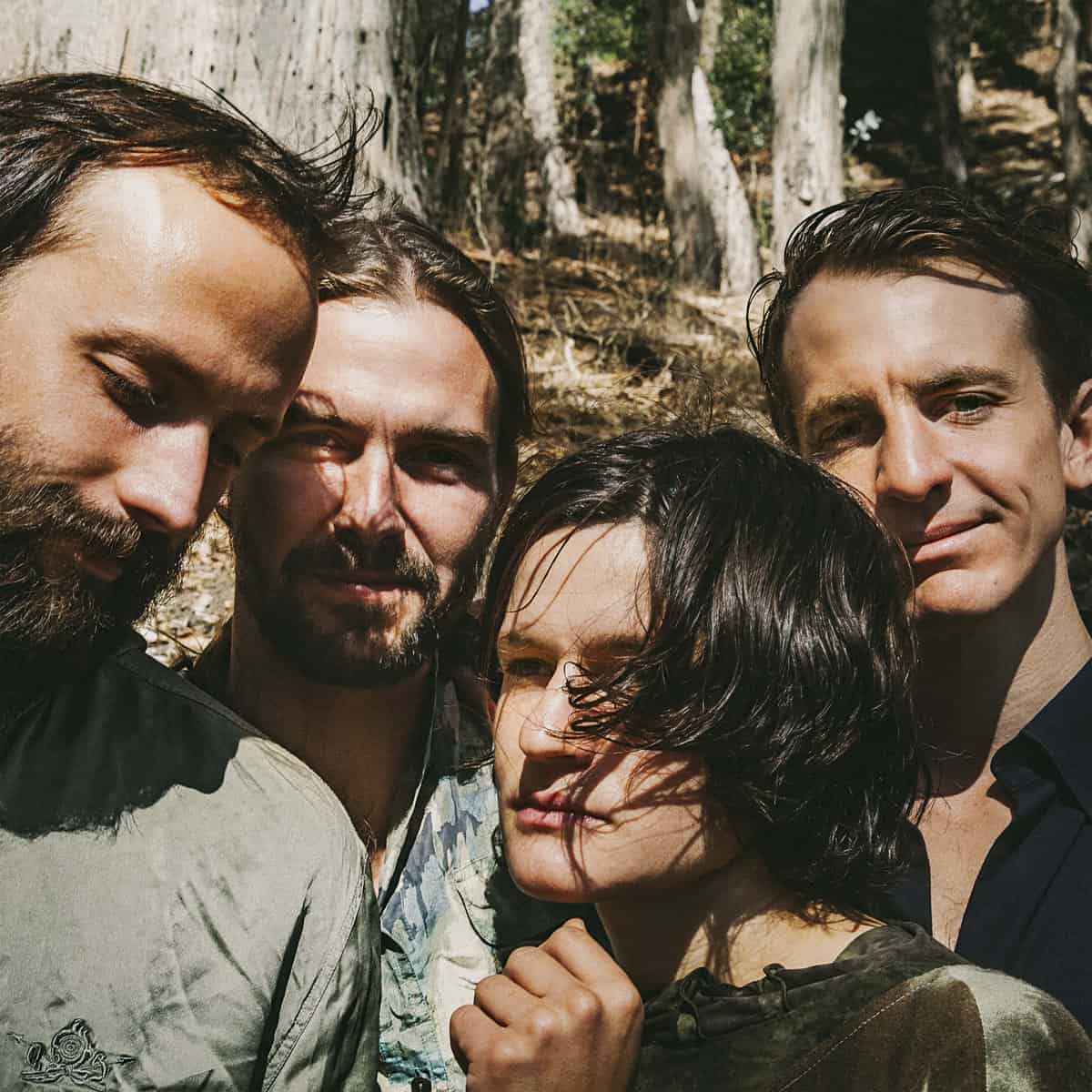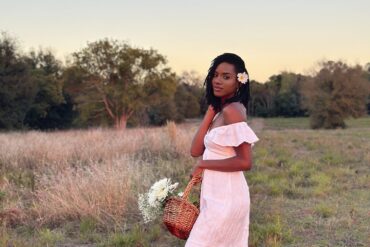Brimheim takes us track-by-track through her unfiltered and unflinching sophomore album ‘RATKING’ – a breathtakingly bold, brutally intimate, and shamelessly human album shining a light on the darkness, the duality, and the dissonance within us all.
for fans of Florence & The Machine, Lorde, Bon Iver
“Brand New Woman” – Brimheim ft. eee gee
I’ve been unpacking many pivotal moments from the utter chaos of my youth in the writing of this record. RATKING has been my way of shining an unflinching spotlight on those chapters of my life and on the parts of me I’ve previously always fought to obscure.
All hail the RATKING, in all her tragic glory!
Or is it a glorious tragedy?
Brimheim’s Helena Heinesen Rebensdorff is vulnerable, unfiltered, and unapologetic throughout her sophomore album. She wears her truths with pride and pain, delving into those dark depths we often hide away – even from ourselves – with a relentless drive and raw passion. RATKING is her diary, her confession, her confrontation; a record of inner reckoning without the promise of redemption. “I’ll climb on bleeding hands and knees to stand on the hill alone with myself, dancing in the rubble,” she sings at the start. “I’m dancing in the rubble without you.”
So begins an instantly memorable, all-consuming fever dream: Breathtakingly bold, brutally intimate, and hauntingly human, RATKING is the scab you can’t ignore, the ache you can’t cover up, and the beat you can’t deny all in one cinematic, soul-stirring collection. Cathartic and churning, Brimheim’s second full-length album hits hard and leaves a lasting mark through sonically and emotionally charged songs built out of the tension and turmoil within.

Picked up where I left off
Not taking any phone calls
Was that a jean pocket buzz?
I don’t need you at all
Am I face down on this rug?
Never been this healthy and strong
I need no one at all
Made myself two promises
Get fit and stay confident
I’m purging any weakness
So I can climb anything myself
Who needs God when you’re a god yourself
Please just give me a second
– “Dancing in the Rubble,” Brimheim
Released March 22, 2024 via Tambourhinoceros, RATKING is an unrelenting light shone on the dissonance inside us all. The follow-up to Brimheim’s 2022 debut album can’t hate myself into a different shape represents an artistic evolution for the Malmö, Sweden-based, Danish-Faroese artist, who – together with her longtime collaborator and producer, Søren Buhl Lassen – set out to challenge and expand the scope of what a “Brimheim record” could be.
The name Brimheim itself is an homage to Rebensdorff’s Faroese roots, and translates to “home of the breaking waves.”
“It’s a bit violent, but beautiful,” she laughs. “The Faroe Islands, where my mother’s family is from and where she lives, is this small group of islands in between Scotland, Iceland, and Norway. It’s really isolated; only 50,000 people live there. The environment is really rocky, cliffy, and the weather is quite harsh. It’s quite a brutal environment, and I feel very strongly connected to that. And in my music, one of the things that I work with the most is contrast – large dynamic shifts. When I started working under that name, it was like returning to a truer form of myself: It was an homage to my cultural heritage, and also the nature that has shaped that heritage and my own turbulent inner life.”
Brimheim’s music has always been deep-diving; she wrote can’t hate myself into a different shape when she was depressed and “in a really dark place.” Songs from that album, like “heaven help me i’ve gone crazy,” “favorite day of the week,” “lonely is beauty,” “this weeks laundry,” and the title track – each of which is at once fragile and fierce, broken yet determined – relay that intrinsically human emotional thunderstorm.
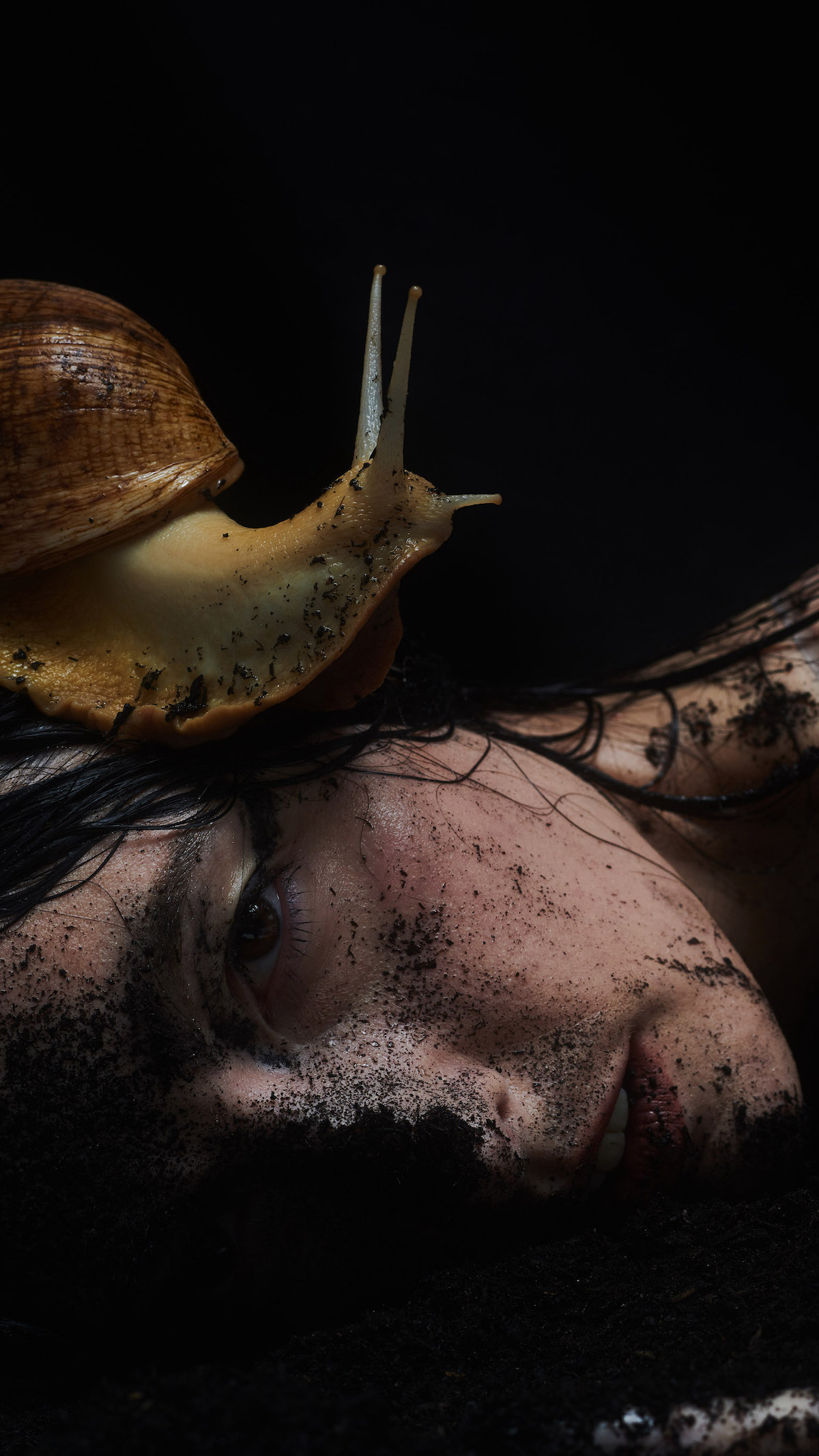
Brimheim’s vision, going into her second album, was to break out of every box imaginable – and it’s safe to say she followed through with that promise.
“I knew I wanted to expand the palette, because at least at here at home, rock music isn’t really a very “popping” genre right now, and I’m often put in that box,” she tells Atwood Magazine. “Like, ‘oh, she’s a rock musician.’ I think because I play with the guitar onstage, it just reads rock. I’m giving rock, apparently. Not that it really matters, but what I make goes beyond the scope of rock music, and I wanted to really explore the outer edges of what ‘Brimheim’ is sonically. So I knew I wanted to do that going into the record.”
“And then the first week that we worked, we did a bunch of more electronic stuff, and some of that got translated into, for example, the song ‘Hurricane’ – that was a very Floating Points-inspired electronic track early on, but we decided to make it just a piano ballad in the end. We wanted to explore the margins of what a Brimheim record can sound like… And pretty quickly I had this sort of thematic umbrella that turned out to be a lot about, maybe, a type of addiction to other people’s validation and approval, which I’ve struggled a lot with in my life because I didn’t really get it from my parents. Especially when I was young, I was very much chasing that from lovers and other people. And that was something I apparently wanted to confront in the music that we were making.”
“So then I made this whole mood board with references and bits of writing and tried to organize or curate some kind of overview of my references and what was going on inside my brain at the time. After that, I had a bit more of a direction, when earlier on we were just improvising, jamming. So I was able to steer that a bit more and create some of the latter songs from the framework of like, what kind of perspective are we missing? Or, what would be a cool new way to talk about this thing?”
Comparing RATKING to her earlier releases, Brimheim says it’s like night and day. Rock music still flows through her veins – her favorite album is Radiohead’s Kid A, and she includes Bruce Springsteen and indie rock trailblazers Yeah Yeah Yeahs on her list of influences – but on her new album, all that rock artistry is given a radiant pop polish – a glaze on top that adds to its shine.
“I think it’s a way more extroverted record and it’s more self-assured, and that’s also how we mixed it – it’s mixed more like a pop record, where Myself Misspelled and Can’t Hate Myself are mixed more like indie records, the vocals aren’t as in your face,” Brimheim smiles. “With RATKING we actually did a whole remixing of the entire record after we had already landed somewhere that was closer to the first two releases… I think it’s way more extroverted, I think it’s more self-assured, and I think it’s more experimental – and it’s more poppy as well, it’s both more poppy and more genre-expansive.”

The result is a dramatic and dazzling alternative record that soars to stunning heights while dwelling in dramatic depths.
Brimheim describes her album as contrast, melody, and shamelessness – likening it to her song, “Into the Ooze,” a hot and heated feminist track raging against traditional gender roles.
“That’s what I was trying to do, is dive into the gunk and the gall and the ooze, all of the bits of me that I’ve shunned. That became the aim pretty early on,” she reflects.
Ooh, keep pouring gasoline on that fire
Ooh, ‘cause I’m not a f*ing coward
Been broken too many times by this
Not gonna be an agreeable little b***h
Never been more ravenous than right now
Ooh, boy, have I got a surprise for you
Girls like me could leave your life in ruins
Ooh, the fangs have grown with every ridicule
You’d have me be your Melpomene but I refuse
Hey, do you remember what you said?
“This girl’s never gonna go feral”
Now she’s ripping off your head…
– “Into the Ooze,” Brimheim
The title RATKING is intended to capture the dualities housed not just within the music and these songs, but within Brimheim’s very being.
“I knew I wanted one iconic word,” she explains. “The previous title was a sentence, which is cool, but I wanted one word. to just be the distillation of everything, which was kind of a tall order. So I was looking through a bunch of books at home, saving sh*t on Instagram, I was in Wikipedia rabbit holes… I was searching for this word for a long time, because I knew it existed. And then in one of my Wikipedia deep dives, I don’t know how I ended up there, but I found the page for ‘rat king,’ this phenomenon in nature where a group of rats get entangled by their tails. I don’t know how it happens; I don’t think scientists even know how it happens, but I was like, ‘that is disgusting,’ but it’s also such a powerful word and I felt it could mean many different things.”
“It sort of encompasses this contrast that I wanted to highlight on the album: This sort of royal put on a pedestal, but it’s this gross little creature and it’s also an unsolvable problem. And that was the word.”

Highlights abound on the harrowing, yet ultimately hopeful and heartfelt journey from “Dancing in the Rubble” to “Hurricane.” The album’s singles – “Literally Everything,” “Brand New Woman” (featuring eee gee), and “Normies” – do well to capture Brimheim’s left-of-center pop artistry, as well as her talent at blending the catchy with the cathartic and captivating.
“Brand New Woman” is one of the album’s undeniable climaxes – a bold, brutally honest, and utterly breathtaking anthem, it finds Brimheim and fellow Danish alt-pop artist eee gee, aka Emma Grankvist, addressing the pressures they’ve both experienced trying to live up to the myth of the perfect woman. Catchy, emotionally charged indie pop comes to a fever pitch in an irresistible and uncompromising challenge to societal norms:
I once begged you to love me
Now I’m doing it again
Turns out that it’s just very hard
To truly love yourself
If I ever figure it out
I won’t be such a child
I’ll be a brand new woman
You won’t recognise me
“I wrote ‘Brand New Woman’ to examine why I’ve felt it necessary to prioritize “comfort” over authenticity in so many of my past relationships – romantic and otherwise,” she tells Atwood Magazine. “An insidious horror of the female experience is how we grow reliant on other people’s validation. The relentless message from society is that our worth is tied to how desirable and pleasing we are to others — not ourselves. Internalizing this is almost inevitable. The interesting bit to work through for me has been my own responsibility in attempting to live up to the myths and stereotypes of womanhood. Why, when I’ve always felt it so suffocating? What would I lose if I rejected it? Obviously my own personal brand of abandonment issues have not made it any easier but that’s probably not a unique experience either.”
“I wanted to underline the contradictions and that’s why the arrangement is so upbeat. Like a funhouse mirror Bruce Springsteen song. It sounds lively and playful but with a subtle eerie friction and some moments that rip through the whole production to jolt you awake. To me the scenes described are nightmarish but there’s still a throughline of hope in there – the deep unquenchable desire to be your truest self.”
Spirited, cinematic, and vulnerable, “Brand New Woman” is inspiring – a dynamic and sweeping hit in the making – and while it used to be Brimheim’s favorite, now she says a few others have taken its place.
“The ones that are very fun to play, or that I feel I can really let go, in a performative sense, are my favorites now,” she says. “And that is ‘Grinding Boulders,’ it’s ‘Into the Ooze,’ and maybe ‘Keep Bleeding Diamonds’ as well. I also love ‘Normies’ because I feel like that’s a really modern pop song – it has a very current vibe. I can’t think of anything that sounds like that song. And of course, ‘Fell Through the Ice.’ I adore those destabilizing chords at the end.”
As far as lyrics are concerned, the second verse of “Grinding Boulders” is home to one of Brimheim’s all-time favorite lines: I’ll be an ocean grinding boulders into to pebbles then to sand, then become a massive desert running through an hourglass. There’s nothing that I’ll need, not even one demand or chore. Can you love me even harder? Can you love me even more?
“I love that because it’s kind of a complicated metaphor,” she says. “I think that I managed to poetically hit the nail on the head about what a lot of the record is about for me, without being too explicit about it. It’s in a metaphorical way that communicates it really well.”
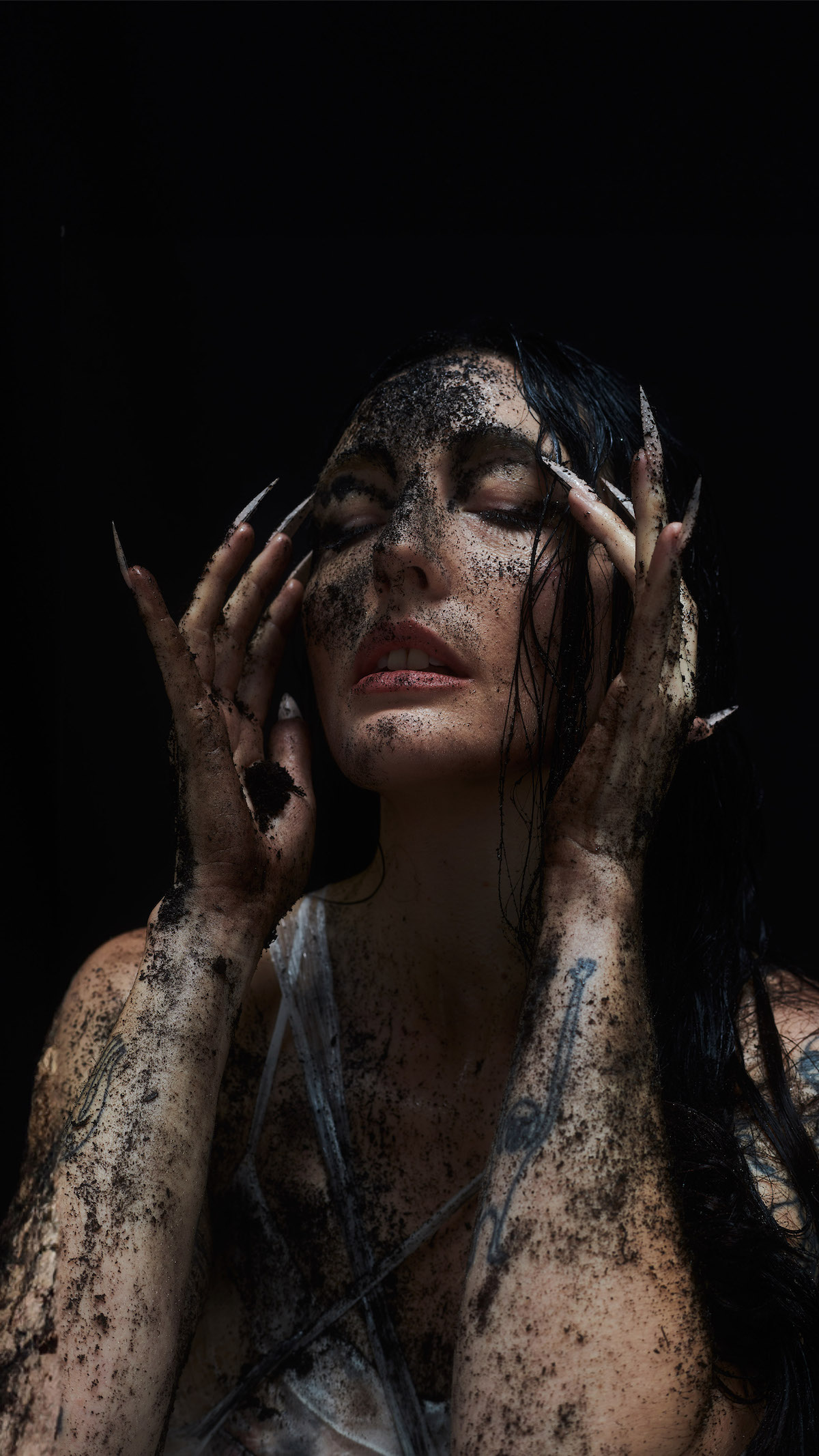
Purging her depths with fiery passion and poetic grace, Brimheim comes alive in RATKING.
And while she may have described her album’s namesake as “disgusting” (her exact words were “gross little creature”), she has absolutely earned a crown with these provocative and powerful songs. Whether she’s unpacking her history or exposing her own shame, calling out societal inequalities and fractures, or finding herself anew in her own primordial ooze, RATKING is the soundtrack to a soul unmasked and unleashed.
Brimheim shines a light not just on her own dark, suppressed depths, but on the darkness within us all – and we’re all a little freer as a result of this music.
“The past two years where this record has come into being have been an extremely transformative time, both externally and internally for me,” Brimheim shares. “What I’ve taken away from it is this self-assuredness – I felt like I had a thread of that, and I was pulling it, when we started. Through the process of making RATKING, I was able to embody that, and the coolest thing about that to me is that I was able to embody that – confronting something in myself that I’m not proud of and stuff that’s kind of gunky and pathetic in a way – and that is really cool to me, that actually by having this sort of exorcism, I feel more self-assured and embodied in a way, and I hope that that translates into the listening experience.”
“I hope that people will want to listen to the record the whole way through because I think that that’s when the songs are the strongest. I feel like it really is a piece of work that benefits from the context that each song provides… and I always want to offer permission. I’m trying to give myself permission to be as fully human as I can be with everything, like how to be authentically yourself. We’re all kind of searching for that, I think, and I hope that this record can offer permission in some way.”
Experience the full record via our below stream, and peek inside Brimheim’s RATKING with Atwood Magazine as she takes us track-by-track through the music and lyrics of her sophomore album!
— —
:: stream/purchase RATKING here ::
:: connect with Brimheim here ::
Stream: ‘RATKING’ – Brimheim
:: Inside RATKING ::
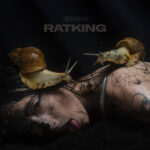
— —
Dancing in the Rubble
This was, if not the first and the second song that we wrote for RATKING, so that first week that we had in the studio two years ago in April 2022. I had this feeling of wanting to break free from something, to kind of start with a fanfare. I completely forget the references that we were talking about that day. I don’t remember those, but I had this feeling to start with a bang with this song. And very quickly we found this bass line that Søren made, and I felt harmonically it really spoke to me. So very quickly I wrote this melody and the lyrics sort of just spilled out. I was in a conflict with some people at the time. So I had that sort of angry energy, which was cool. And it’s a cool line, I think, to start a record picked up where I left off, but then it goes somewhere completely different. And this represents the delusions of grandeur, part of the RATKING duality on the record, where the other one is very sort of small and pathetic, but this is a fanfare, and it very quickly found its form.
I knew immediately that I wanted trumpets on it. But that happened a little bit later ’cause I… It has this sort of mythological feel to it in the lyrics, even though it’s still… There’s some references to more modern imagery about it. And to me, it has this sort of mythological feel and I wanted to sonically underline that, with the trumpets that a very talented trumpet player, Maldon Otok came into the studio and played for us. And especially the solo I adore, because it’s so… contemplative.
Normies
I knew I wanted to try and work with kind of short song forms. And this is one of the songs where I had a little bit of something that I brought from home. I think I brought the chords, I played around on the couch at home and brought a memo of me playing this. And it was just the verse and it was a bit longer, but we just decided that we already, we have what we need in the verse. It’s the shortest verse ever. It’s extremely brief and that was a really fun and cool thing to play around with. Just the structure of it, a verse can just be these two lines. And then we’re moving on to where it matters, which is the chorus and of course there is a guitar solo that Buster Jensen plays.
And I told him I want an anti-solo like the song by Alex G, “Memory.” It has this, but I don’t even know if that’s a guitar, but it has this horrible, horrible sounding solo. And I was like, that’s what I need. In “Normies” is not as radical, but it’s still quite radical for the context of the song. And I wanted that because you could interpret it as just a regular love song, or it could be about just falling, being in, having a crush or being in the early stages of an infatuation with somebody. But in my mind, if there’s something kind of creepy about that, or there can be the way that you can, at least if you have the experiences that I have, lose yourself completely in that type of infatuation and then just sort of erase yourself in that. And maybe even to a degree where that other person didn’t consent to you, just kind of putting everything on them. So I wanted to underline that slightly stalkery or kind of creepy vibe with the solo.
Fell Through the Ice
“Fell Through the Ice” is one of my personal favorites and I wanted it to be a single, but people were not on board with that, but I was like, this is such a happening little tune in my ears. And also a rare example of where I actually had something that I brought to the studio, which these, I wrote the first bit of it, I guess the first verse you’d call it. And there’s one of those things that were just spilled out of me, both the words and the chords simultaneously, almost, Oh, this was just, this was just there for me to discover kind of vibe. And I brought that and we made this the first bit, which is kind of more reminiscent maybe of the first record more kind of an indie singer/songwriter, indie rock tune.
But yeah, but then speaking of contrasts, I really, I wanted to destabilize it. And then Søren found these, he sat down at the piano ’cause I was like, let’s do some, let’s make it go somewhere completely different. Let’s go prog rock on it. And let’s just, let us, let it take us somewhere. I think we listened to, I forget the name of the Mitski song. But she has a song that does something similar but not… But it goes to this other place that is quite destabilizing harmonically. Maybe I can find it after, but I was like, that is a vibe. I want something that destabilizes it. And he sat by the piano and then he just threw these chords together quite quickly. And they’re really weird together and they’re not very singable, but I really liked that. I was like, Ooh, this is a nice little puzzle. So yeah. So he, I brought home a bounce of that, bit of it to try to write top-line it with something and it proved extremely difficult. So I had to come back empty-handed and then we wrote it on the piano, the vocal melody on the last bit.
So we could sort of have an overview of which notes are available to us. And then we wrote that and then I tried to sing it as sort of softly desperate as possible. Because it represents everything that it’s about a breakup, right? That you don’t want to face. Another person is breaking up with you and it feels death and you don’t want to face it for that reason. So I wanted to, in that second part all of the pent-up stuff that you’ve been trying to keep to yourself just can’t help but spill out.
Literally Everything
“Literally Everything” is just the same chords basically the whole way through, so the structure of it is very pop structure and those four chords, you’ve heard them a million times before. But when we made this, the bass groove… there’s both an electric bass and then a bass synth that has an interplay – it’s simple and tight and bouncy, but it’s very minimal. I knew I wanted to make a dance-y tune that day.
I’d been listening to I think it was a Moog song, the Danish artist Moog from her record that came out that year, which was, had a super dancey vibe, but with also some not at all related, actually, this is more of a kind of an Indie take on house music, but, and hers was more synth wavy, but I just knew I wanted to make a dancey song. So that’s what we’ve strived to do. And Søren played the electric bass and that was cool. He had made a little groove and he played that. And then we wanted some synth bass on it. And then because of latency in the digital audio interface, it shifted. So the synth bass sort of moved and then it just sounded really cool. It’s like, Oh my gosh, this is the way that it needs to be. It was totally in the pocket.
But it was through quite a process because we loved the verse is saying this to the first verse on that first day, which was also made during the first week of us, even recording anything. And my voice is sort of really low and it’s kind of… Yeah, I don’t know how to describe it, but it is a bit different to how I sing normally. And it’s also sung at a very low volume. And I don’t know, there’s just something about it that really has such a strong presence, all of it together. So we struggled for a long time with the chorus. How do we follow this up? We love this little bit. How do we follow it up with anything? And we tried a bunch of different things, but ended up with this which I like and that was helped by the guitar that I think Søren played it initially and then Buster came and played his version of it. So the guitar and the chorus sort of helped guide where that melody went. And then we were, it was missing a lot of detail early on and I wanted to throw some more shit in there, again to destabilize it, those little synth sputters and the, how the beat builds at the end. Was like me saying, This is cool, but we need to make it weirder, and we need to also make it more land more in the end. We need a peak.
Keep Bleeding Diamonds
“Keep Bleeding Diamonds” was the one that took the longest time for us to solve. And I think we made maybe six different versions of it. And the reason for that is that I was still, or I was not signed, but I was with a different label with the first record and we were still working together that. Maybe we, they were also going to release RATKING. And very early on they wanted demos that were singles. And that’s not a super generative place to start for me. So we were like, Okay, let’s make a single. And we made something, we made a chord structure and a pop song. And then the next time we were working on it in the studio, none of us were happy with it.
So then we changed the verse. Okay. So then we kept the chorus, changed the verse completely. New chords, new words, new everything. That’s actually a bit better. Let’s make a chorus that then can match that. So it kept being, every iteration was like, Oh, now this part is actually pretty good. So then we go back and change the old part. And we did that back and forth many times. It took a long time to solve this one. And yeah, I listened to the first single off of the Yeah Yeah Yeahs’ latest album, Spitting Off the Edge of the World. And the chords are basically the same as in that song. The vibe is very different, but the chords are basically the same because we were trying to find chords for the chorus.
And because I was just vibing hard with this song, we’re like, let’s just try something similar to that. And then it really worked super well. So, yeah, but I really like it now, too. I knew I also wanted to have a wailing part because I like getting to do that live, singing that belt-y way. So that was really like, I want that moment live, that huge moment where I just get to sing my heart out.
Snow Angels
“Snow Angels” was written by Søren, myself, and Buster Jensen, who’s a guitar player I’ve worked with live in the past. And also, yeah, I invited him into the studio because he is an extremely talented player on many different instruments. And he just… He has some very, I really what he does harmonically with a lot of stuff that he plays. So and he he just sits in his studio all day, every day, and it’s just records different things. And he just sent me a bunch. And he had been listening a lot to Adrianne Lenker’s solo stuff during this time. And had played around with tuning his guitar differently, inspired by her. And so one of the bits that he has sent me was this. And I thought it was really cool and very singable, which is always important to me.
So I made this little melody, I top-lined it with this little lyric and it’s sort of a more a quieter moment, which I felt at the time that we didn’t have an example of. So that was cool to add this little folky feel. But then again, I have to throw a wrench into things. I can’t just let shit be what it is. So I wanted to, again, recontextualize it by making the outro have this really creepy droney moment. And that came about because by accident, when I was singing the chorus or the last lines of the song, “By Loving me You Make me Real.” And it sort of glitched in the… So it sounded a little bit choppy or detuned in one of the words. And I was like, that is the coolest thing ever. And that was like, Okay, chop all that shit up, make it really weird, make it into a robot that is short-circuiting. And then put this deep sub drone in there and put something that is very dissonant on top of it so we can really… This is not a nice situation. Somebody is so completely dependent on their partner, that they’re not even a real person. This is creepy. So that came just from that little, little glitch.
Into the Ooze
This album is also a feminist album, I guess. I wasn’t super intentional about it, about it being that, but it is also raging against gender, the woman gender role and “Into the Ooze” is, and I guess also a “Brand New Woman,” but “Into the Ooze” is sort of the angrier take on that of just having had enough of trying to, I guess, self-impose or fitting into to a traditional female role. And this was, again, Buster Jensen, who had made this guitar bit… There’s a pretty long intro, then there’s the verse and then there’s the chorus, and that basically just repeats. So the structure is quite straightforward, but he had made those three bits and he had sent it to me, and I just loved it immediately.
I thought it was such a vibe. I loved those chords together, harmonically. I loved singing on it, so I was just playing it really loud in my apartment and just singing aloud to this. I thought it was really brilliant. And so I recorded something and I brought that to Søren, and we were like, yeah, we don’t really have just a straight up rock song on this record. And that would be cool, especially with these really happening chords. And so that was solved pretty easily. But I also felt like, we need to make it a bit more, I don’t know, cinematic or something. So I knew I wanted violence on it quite early on. And we invited a gorgeous player, Mobei Yat, in to do that part, which really elevated it for me and gave it a slightly mythological, cinematic feeling. We’re not just down at the local venue, it is a little bit bigger and the feeling is bigger. And also some of the references in the lyrics, the muse of tragedy, Melpomene is referenced in the lyrics. I wanted that kind of feeling in it, even though this is a pretty straightforward rock song. It’s a pissed off song, and I like that. It’s a good energy sometimes to be angry and a lot of the record is so sort of pathetic and self-defeating that I wanted that represented having had enough of that.
Brand New Woman
“Brand New Woman” is not my centerpiece anymore, but it was for a long time. I was like, “This song.” ‘Cause I also really loved writing it. The lyrics were really easy to write, and I love how they came together, and I loved also inviting Emma, eee gee, to sing on it. I don’t know if you can hear that reference in it, but for me, it’s very kind of Bruce Springsteen, which is not something that I’ve even listened that much to, but I had listened to a lot of ’80s pop music and I had listened to some Bruce Springsteen, and that day in the studio, that was the vibe. That was the vibe that we wanted. Something that was pointing forward and then I wanted to contrast it with lyrics that were… This is a person that really wants to break free from something that they’re trapped in, but ultimately they’re not able to, or they’re not. And I like playing around with that thematically, you could also interpret it as, “Okay, they are gonna.” But it could also be a tragedy. They want it so badly, but they’re not able, they’re just fantasizing about what it would be like. So yeah, so I really do love this song.
That was a pretty straightforward day in the studio, or just that. It just kind of, we found those chords and the lyrics just came about and I loved it really quickly. And then I knew I wanted more backing vocals on it and I had tried my hand at… But it wasn’t really matching what I was hearing in my head. The backing vocals that I was recording just at home. So then I asked Emma, who’s a friend of mine, and she is, that’s one of her… I mean, she has a great ear for melody. She’s an enormously talented songwriter, but she also is really, really good at arranging backing vocals. So I asked her, “Could you give this a go, just see what you come up with?” And she did.
And what she sent back, I think she was in Costa Rica on some writing trip. She’s such a jet-setter. She goes everywhere and writes everywhere. It’s really cool. And she was just there and she just had her little home studio set up and she made this and she sent it back. And I was really… The moment I heard it, I was like, “You need to be on this as a feature, this is too cool.” I was like, “‘Cause it really has her fingerprints on it for that reason.” I was like, “You need to be on this song.” And luckily she wanted to, she’s really popping off here back home in Denmark and everybody wants her on their songs. So I was very happy that she agreed to be on mine, and that just made it for me, ‘cause we’re quite different. But there is somewhere where it crosses over, where we can meet. And I feel “Brand New Woman” is exactly that place. So yeah, I was very excited to have her on there.
No Liver, No Lungs
“No Liver, No Lungs” is probably the song that sounds the most like Søren Buhl’s main project, which is called Blaue Blume, which is dream pop. It’s the band that he got his start in and they are still playing and they’re a really, really cool band. They have these sort of big chords… there’s a grandiosity to it, to what they make. And it’s also very synth based for them. This parallels that a lot, ’cause he is just really, really good at that. Of course, all the songs actually have acoustic drums. It’s all drum kit and then with some samples added, but there’s on all the songs where there are drums, there’s an acoustic drum kit. So even the stuff that’s more electronic gets very grounded in reality in a way. It has that human presence in the drums on all the songs.
We very much jammed this, and I really enjoy playing this live. We started with my live band playing this. It’s really, really fun to play live. I think that’s one of the songs where we figured out this kind of drum philosophy. We had made all these big synths and we’d had some programmed drums, but it’s like, no, ’cause Søren is also a drummer, that was how he started in music. He’s a really great drummer. So in that, and also the next one, which is the more electronic sort of songs, they really get grounded with the drums and the lyrics are inspired by a nightmare that Marilyn Monroe described having… I think I heard it in a podcast about her life, and yeah, I wrote the lyrics inspired by a nightmare that she was talking about.
The instrument at the start is a certain type of analog synth, and it is actually the same synth that is playing the line in the outro of this song, but way slowed down. So we just made that into the intro ’cause the sound of it was so cool. When we slowed the synth way down, it set such a texture to it, and it does sound like some kind of horn, or it has a certain textural quality to it that I really enjoyed. We just tacked that onto the beginning, that bit that he plays really quickly, that synth part from the outro of that song – and then slowed it way down.
Surgeon
“Surgeon” is so different and, like I was talking about before, with this record we wanted to expand the scope of what a “Brimheim record” could be. And we both felt that that required, not required because it is from just plain curiosity. It’s not, oh, we have to do this. It’s just like, oh, it’s exciting to see what we can… Where we can go. But we both felt that going somewhere that is way more abstract is first of all really interesting just in the process but also represents… Again, on the record as a whole, a bit of it’s destabilizing a little. And I like that. I think that is that this song is in like when you look at the record as a whole, the same thing that little droney thing at the end of, “Snow Angels” does to that song this song does to the record. It’s also quite dark. I remember when we were making it in the studio, when we were mixing drums, I was like, we were listening to this over and over and over again. And I got crazy from, I was like, oh my God., I don’t know who I am anymore. This is such a gloomy dark, but in a cool way. I really like that that is represented, and of course I am super inspired always by probably the biggest influence on me creatively has been a band like Radiohead as a band. And they do similar things with going completely abstract on a record that also has very kind of straight songs. So very much inspired by their way of making records.
Grinding Boulders
I love “Grinding Boulders.” I really love this song, because of the melodies – this was another Buhl Lassen’s creation, these chords in the first part of the song. I had top-lined that at home, I think, or had some kind of thing that I brought to Søren and it worked. And then we, Søren and I, we recorded a completely different second part of it, which was way more aggressive, which was a rock explosion. ‘Cause I knew I wanted it to change character, go prog rock on it, and become something completely different. And we made this really rocky aggressive take, but it just wasn’t good, just wasn’t cool. It just didn’t work. There was this vulnerability in the lyrics, especially… I really loved the lyrics of this song. and how they transformed throughout and it just didn’t match the feeling of… Again, this sort of quiet desperation and self-delusion of somebody who just really, really doesn’t want to face that the person that they’ve grown so dependent on is slipping away from them. Maybe because they’re too clingy or whatever, they’ve done it to themselves maybe. And we were listening to this version of it for a long while until I just… I couldn’t listen to it anymore. I was like, I hate this. It cannot be this.
I think Søren was, he was ready to, this was towards the end of making this record, that we worked on this song. And I think he was a little bit like, whatever about it. He wasn’t in love with the first bit enough to feel like, oh, we have to nail this. So he was ready to just omit it and just have the record be without that song. But I loved it too much. I really wanted it to, I said, can we just give it one day and see what happens? Can we please just do that? And he agreed, luckily, and I think we just called Buster from the studio, can you just quickly make some new chords? It has to go somewhere else. It has to be the same tempo, but we want a more introverted vibe, but that can also grow. And he just made this in an hour and he sent it to us. And these chords, I just love them so much. And yeah, and then I made that melody at home after, and I also recorded that myself again, I think because Søren was a little bit skeptical about it.
So I was like, no, no. Let me prove to you, this is gonna be very happening. And I made these vocals! I really, really love this song. It’s also really fun to play live. And I think I convinced him with the vocals that I made, that top-line that I made, and then we finished it in the studio. I think, I would’ve also liked to have maybe violins on that or something, but I think it also works just as a rock song.
Hurricane
The first version of this was a completely different song. We had made this texture of a bunch of rain droppy or vibrating synth blops. I don’t know how to describe it accurately, but we had made this texture and put a baseline on it, and I had sung this on top, and I really liked the lyric, which is about letting go. It is about death in a certain way. It’s about acceptance of the way that things are, and acceptance of losing things or people and finding a type of serenity in that acceptance. And that felt inappropriate to put anywhere else than in the end.
So because of the nature of the lyrics and the way that I had sung it, I think it was Søren’s idea. It was like, let’s just try to make this into a little piano tune and just make it really, really raw. And it sung in a one take. And afterwards, when I had recorded that vocal, I actually felt like, oh, that was not a good day for me. That was not… I could do better. It was, let’s do it again. He was, no, wait a minute. Listen to it in a couple of days when you’re not so close to it, you’ll see that it’s good, don’t worry. And I did, and I’m really happy that I didn’t rerecord it because it really does have that very, it has a presence and an immediateness and yeah, I really love this song.
— —
:: stream/purchase RATKING here ::
:: connect with Brimheim here ::
— — — —

Connect to Brimheim on
Facebook, TikTok, Instagram
Discover new music on Atwood Magazine
© Andre Hansen
:: Stream RATKING ::

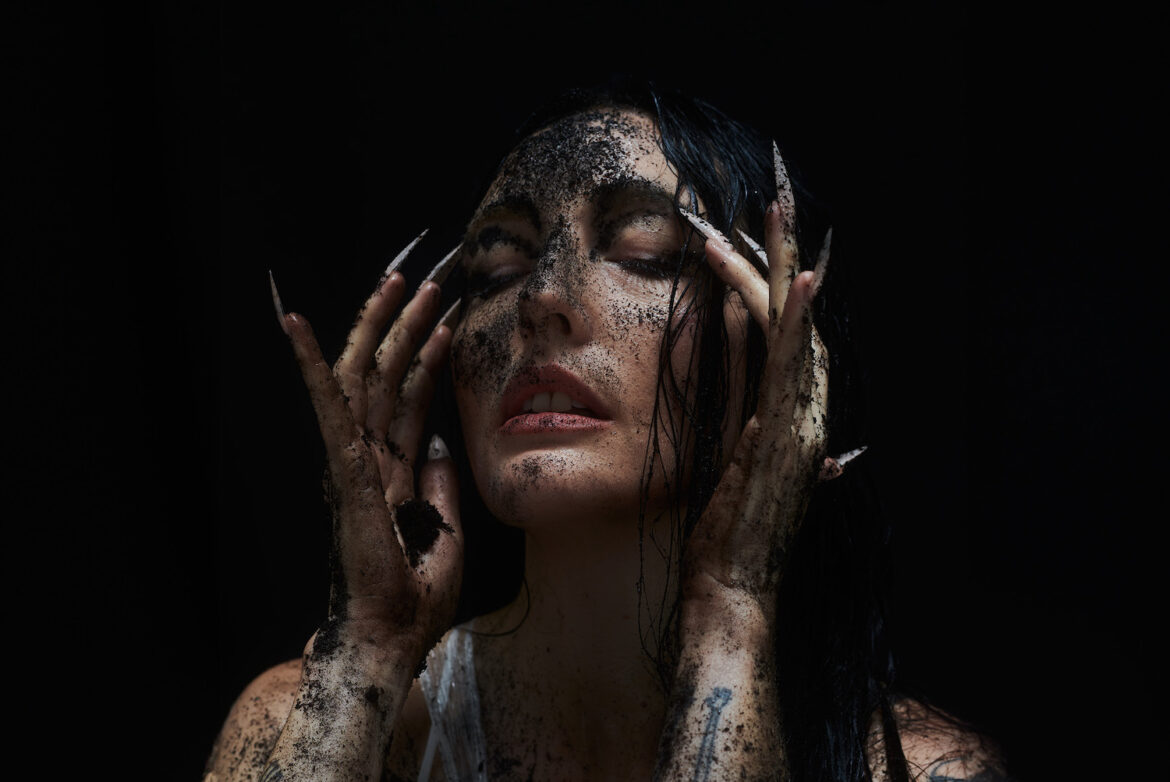
 © Andre Hansen
© Andre Hansen
